Clamp-on ultrasonic flowmeters with efficiency potential
20.03.2024Ultrasonic flowmeters have made enormous progress since their introduction into industrial measurement technology. The technology is now fully developed, but there is still room for improvement. Endress+Hauser is driving forward the development of its clamp-on flowmeters with time-of-flight ultrasonic measurement in three ways: by improving performance, by simplifying handling throughout the entire life cycle and by expanding the areas of application to include even off-label uses.
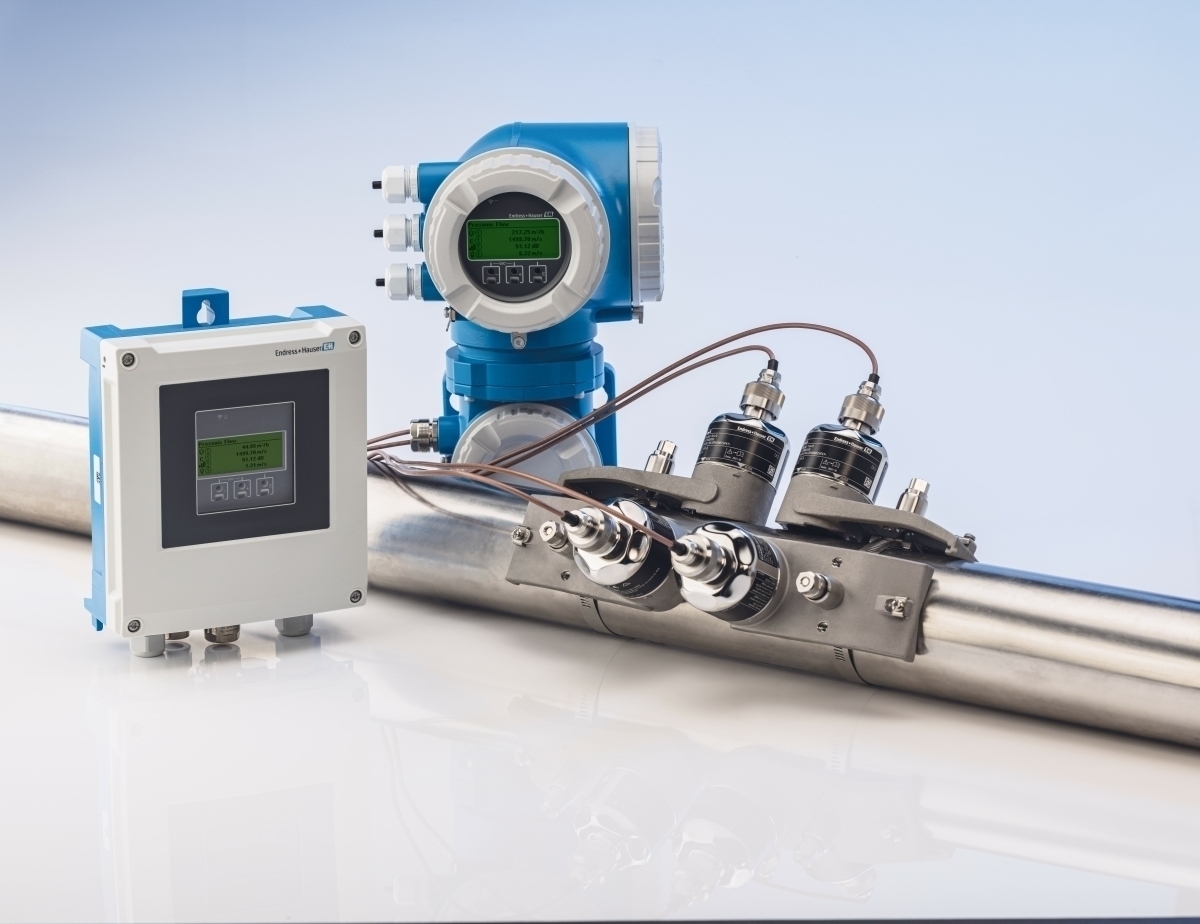 Ultrasonic clamp-on flowmeters Proline Prosonic Flow W 400 and P 500 – noninvasive and easy to install – no process interruption – maintenance-free operation
Ultrasonic clamp-on flowmeters Proline Prosonic Flow W 400 and P 500 – noninvasive and easy to install – no process interruption – maintenance-free operation
© Endress+Hauser
Prosonic Flow W 400 and Prosonic Flow P 500 are the names of the two clamp-on ultrasonic flowmeters from Endress+Hauser. As a starting point, they can do what you would expect from the technology used: measuring, totalizing and balancing the quantity and volume flows of liquids in pipes and thus monitoring processes or detecting leaks. In principle, clamp-on sensors can be installed without opening the pipe, which means that, unlike inline instrumentation, no seals are required. The sensors never come into contact with the liquid medium, so aggressive, corrosive or abrasive liquids are therefore not an issue on the instrumentation side.
Clamp-on also means that they can be retrofitted into existing systems without interfering with the piping system while the process is running. There is currently a need for this in auxiliary circuits or energy-relevant circuits, for example, which originally required no or only very simple instrumentation from a process control perspective, but now need to be recorded more precisely, for example for energy balancing and optimization. A clamp-on measuring point can also be set up temporarily, for example to verify the function of existing in-line instrumentation.
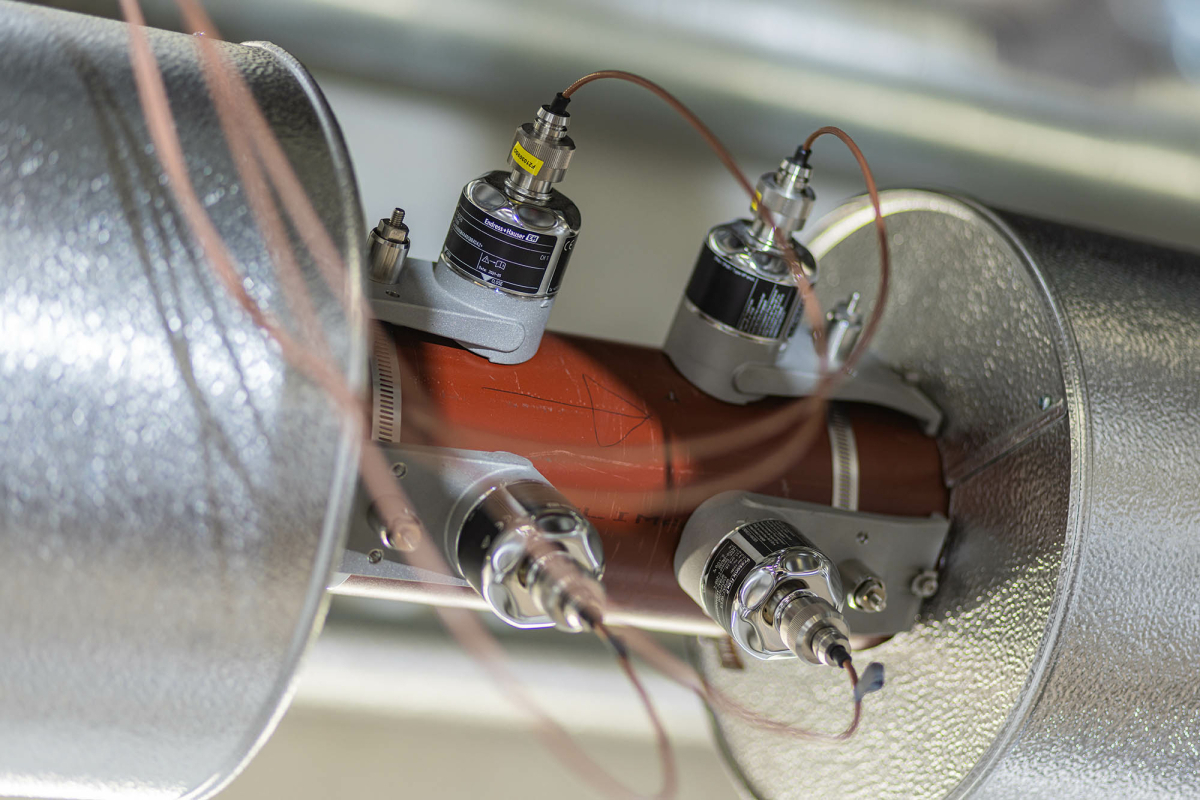 Endress+Hauser clamp-on sensors for non-invasive flow measurements without pipe work or process stops
Endress+Hauser clamp-on sensors for non-invasive flow measurements without pipe work or process stops
© Endress+Hauser
Ex and non-Ex applications
“Prosonic Flow W 400 was originally designed with water and wastewater technology in mind, and Prosonic Flow P 500 for process technology, i.e. for a wide variety of liquids such as hydrocarbons or chemicals,” says Thomas Jahn, Head of Ultrasonic Product Management at Endress+Hauser. However, this history has no influence on the actual areas of application. “The real requirements of the measuring point are always decisive when selecting the system. Ex, SIL, temperature and requirements for inputs and outputs are the most important keywords here,” adds Thomas Jahn. Prosonic Flow P 500 guarantees functional safety in accordance with IEC 61508 (SIL) and can be used in safety-related applications; it has the usual international approvals for potentially explosive atmospheres and can therefore be used in hazardous areas, while Prosonic Flow W 400 is more suitable for basic applications.
Both devices share basic technical data; the measurement performance and precision are the same for hardware generations from May 2024. Both cover nominal pipe diameters from 15 to 4000 mm, which is sufficient even for high-pressure pipes in storage power plants. The ultrasonic sensors themselves are robust stainless steel constructions, and there are transducers for all common pipe materials, including plastic and GRP, with and without liners. Depending on the nominal diameter, the permitted media temperature is from -40°C to +130°C (W 400) or -40°C to +550°C (P 500), and the measuring range is 0–15 m/s.
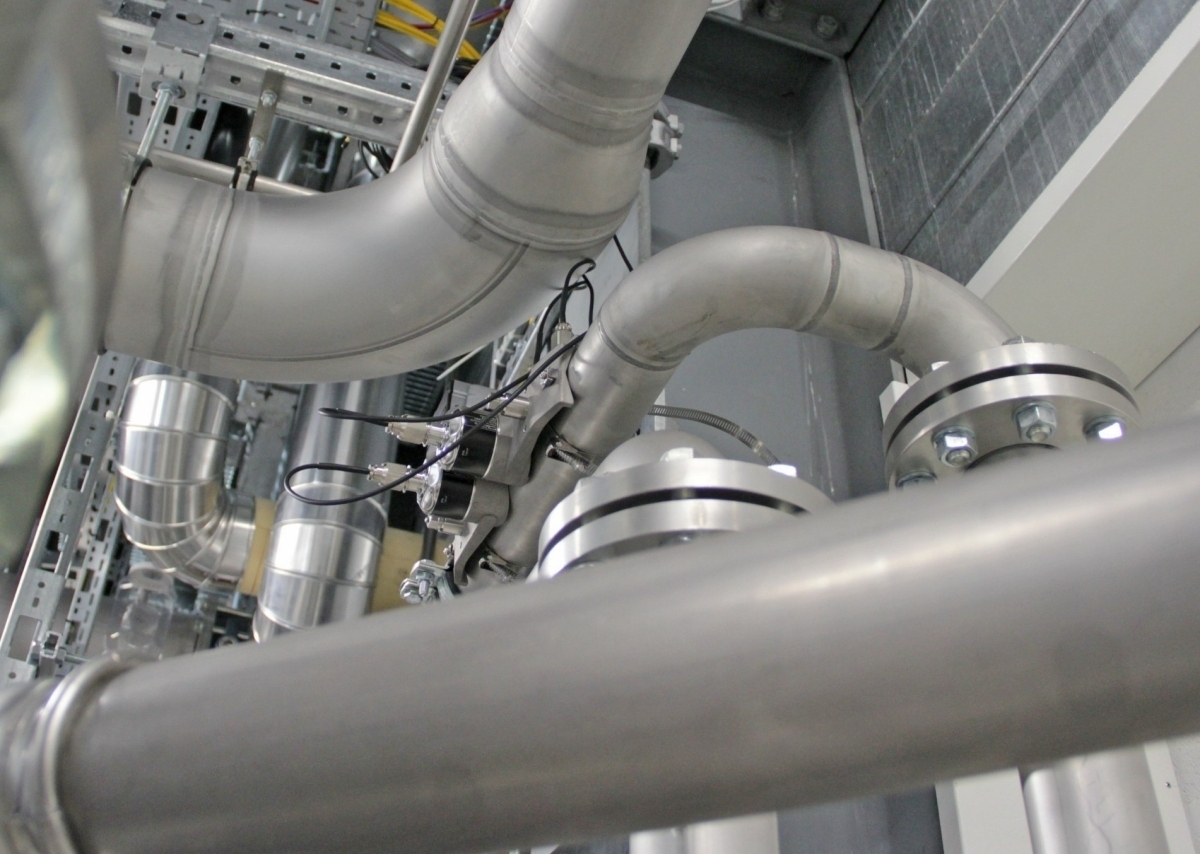 When space is limited: Ultrasonic clamp-on flowmeter with FlowDC function for consistently high performance even at only 2 x DN inlet runs
When space is limited: Ultrasonic clamp-on flowmeter with FlowDC function for consistently high performance even at only 2 x DN inlet runs
© Endress+Hauser
Turbulence is no longer a disruptive factor
Pressure, density and conductivity of the medium do not influence the flow measurement with ultrasound for most liquids, but for others they must be taken into account. For crude oil and refined oil products in particular, or more generally for hydrocarbons, the actual volumetric flow is determined through pressure and temperature compensation. Endress+Hauser provides a special petroleum application package that calculates the necessary correction values based on API MPMS and ASTM calculation tables.
Software-based compensation also straightens the measurement results at other points and allows Prosonic Flow devices to be situated at almost any location in the pipeline system. Constrictions and bends cause turbulence in the medium, which typically distorts the data if the measuring point is positioned too close to these points. Endress+Hauser has equipped both flowmeters with the in-house FlowDC function, where DC stands for disturbance compensation. FlowDC is a software-supported function that only requires a few details, in particular the length of the inlet section and the type of disturbance factor, e.g. a pipe bend. With the help of FlowDC, the measuring point can be moved as close as twice the pipe diameter to the point of interference, where otherwise a straight section around seven times longer would be required, which is often not available in cramped systems. Twice the nominal diameter is also sufficient for the outlet section; FlowDC flowmeters can therefore even be installed where there is not enough straight pipe section available for other devices.
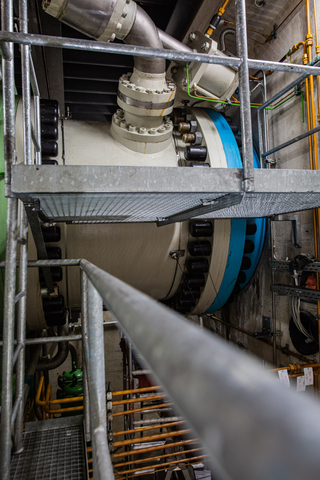 Ultrasonic flow measurement in an energy plant – maintenance-free clamp-on sensors on a DN 2000 pipe, with FlowDC function
Ultrasonic flow measurement in an energy plant – maintenance-free clamp-on sensors on a DN 2000 pipe, with FlowDC function
© Endress+Hauser
Web server in the device – direct access to all functions
User support through software is a key feature of both Prosonic Flow devices. All diagnostic, configuration and device data can be accessed directly and with clear user guidance via the built-in web server. Even during installation, the signal quality can be checked either via the control panel of the transmitter or through the web browser of a mobile device. This makes it very easy to determine the optimum position of the sensors. The web server in the device eliminates the need for external tools and data, speeding up everything from configuration to device maintenance.
Heartbeat Technology integrates test functions
As with the entire Proline product range, Prosonic Flow devices are equipped with Heartbeat Technology. Devices with Heartbeat Technology have self-diagnostics, self-monitoring and verification functions, can regularly report their status to the cloud and, for example, make it possible to plan upcoming maintenance work using trend analysis. Diagnostic functions can also be triggered manually at any time via the cloud. The diagnostic messages are standardized according to NAMUR NE 107.
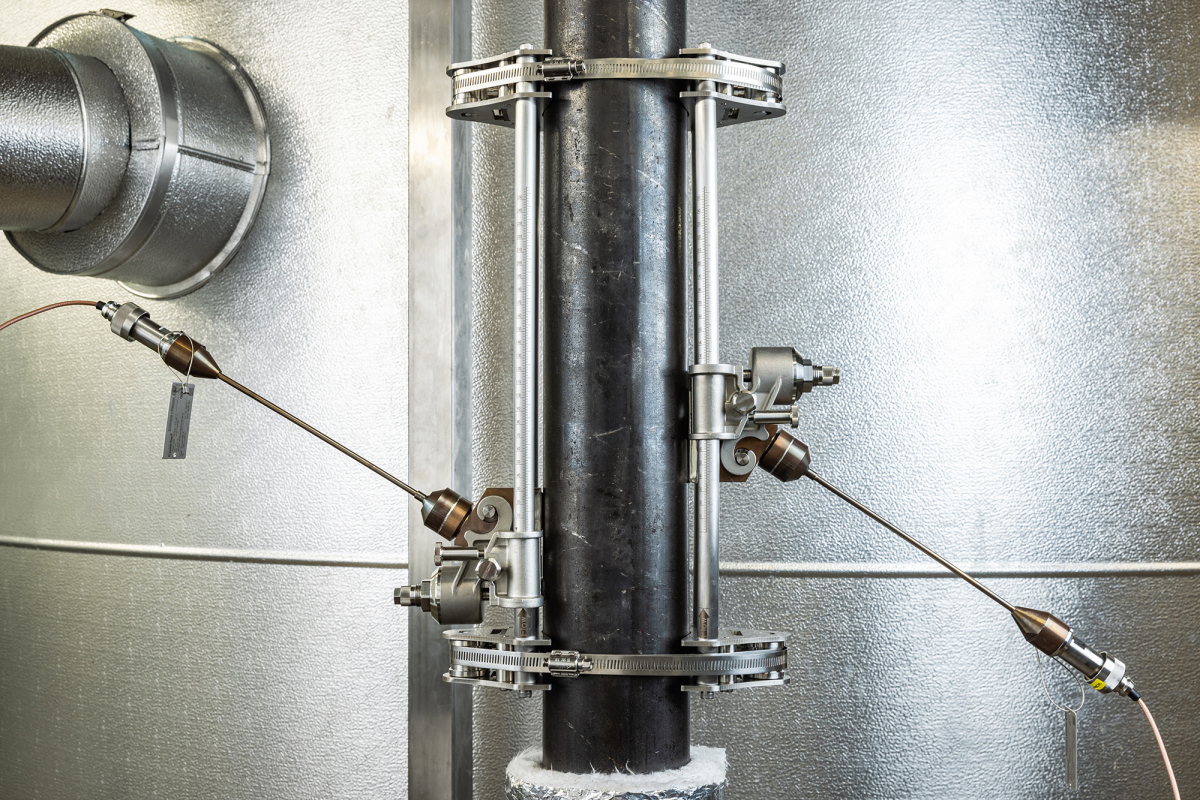 Flow measurement up to 550 °C (1022 °F) with Prosonic Flow P 500 high temperature sensors
Flow measurement up to 550 °C (1022 °F) with Prosonic Flow P 500 high temperature sensors
© Endress+Hauser
Thinking out of the box: off-label applications
The transmission of ultrasound to the medium in the pipe is dependent on perfect acoustic coupling. However, gels and pastes that ensure a gap-free connection between the sensor and the pipe have a major disadvantage: they age and can wash off or dry out depending on the ambient conditions, changing their acoustic properties in the process. The result is a permanent drift that is difficult to predict because it is strongly influenced by variable factors such as the ambient conditions.
Instead, Endress+Hauser uses long-term stable pads or heat-resistant metal foils, which make the regular replacement of paste or gel superfluous. If drift due to aging is excluded, systematically deviating measured values compared to other measuring points can therefore be attributed to other causes, such as the formation of deposits in the pipe. Changing gas or particle contents in the medium can have a similar effect on the measured values. “We can also indirectly determine more than just the flow rate,” says Thomas Jahn. “How such off-label applications can be used innovatively is something we have to specify together with the customer for specific cases. However, we are already considering experimental use in real applications,” adds Jahn.
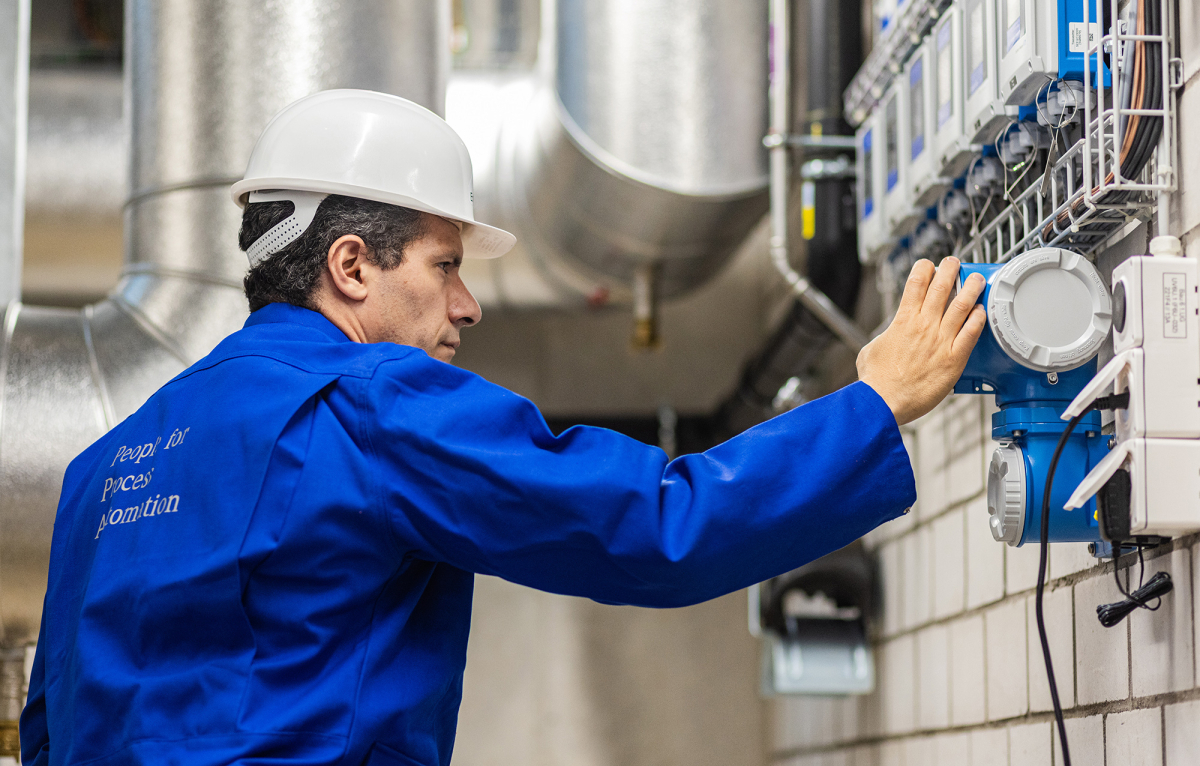 User-friendly operation – web server offers full remote access, while the device’s display offers convenient on-site interaction
User-friendly operation – web server offers full remote access, while the device’s display offers convenient on-site interaction
© Endress+Hauser
Simplicity means cost-efficiency
On the engineering side, technical performance is without question a key argument for or against a particular instrument. The selection criteria can be clearly defined and applied. The effort involved in mounting and installation, parameterization and commissioning, maintenance and servicing over the service life is not specified in any data sheet with hard values. The bottom line is that these are costs that are often not recorded at device level.
OPEX, i.e. operational expenditure, or life cycle costs, aka TCO, are not the primary responsibility of engineering and technology departments. However, high operating and maintenance costs are noticeable at this level, albeit in a different currency: working time. The clamp-on flowmeters from Endress+Hauser address this problem at all levels with the greatest possible simplicity. Simple installation during the ongoing process, easy configuration and parameterization, easy access to the devices via web browser from anywhere in the world, permanent maintenance-free, acoustic coupling – all this adds up to a clear plus on the bottom line. The already high technical performance in the core areas of application and the first exciting off-label applications such as the detection of deposits in pipes or gases or particles in the volume flow mean that we can expect a lot more from the Prosonic Flow clamp-on device family with continuous further development.

